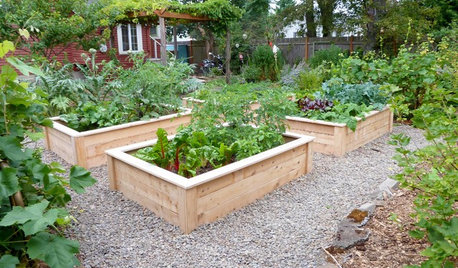Excited to get started, need help
amlar
14 years ago
Related Stories

PATTERNFit to be Tiled: Get Some Pattern on the Floor for Excitement Underfoot
Get all the visual delight of a rug with more durability by treating your floors to a pattern done up in tile
Full Story
HOUZZ TOURSHouzz Tour: A Texas Home Gets a Healthy, Fresh Start
Mold eradication was just the beginning for this Austin family's home on a creek bed — toxins of all kinds now don't make it past the door
Full Story
LIFEDecluttering — How to Get the Help You Need
Don't worry if you can't shed stuff and organize alone; help is at your disposal
Full Story
HOUSEKEEPINGThree More Magic Words to Help the Housekeeping Get Done
As a follow-up to "How about now?" these three words can help you check more chores off your list
Full Story
DECLUTTERINGDownsizing Help: How to Get Rid of Your Extra Stuff
Sell, consign, donate? We walk you through the options so you can sail through scaling down
Full Story
HOUZZ TOURSHouzz Tour: A Modern Loft Gets a Little Help From Some Friends
With DIY spirit and a talented network of designers and craftsmen, a family transforms their loft to prepare for a new arrival
Full Story
DECORATING GUIDESHow to Decorate When You're Starting Out or Starting Over
No need to feel overwhelmed. Our step-by-step decorating guide can help you put together a home look you'll love
Full Story
GARDENING GUIDES12 Tips to Help You Start an Edible Garden
Get on your way to growing your own vegetables with a raised bed or a few containers on the patio
Full Story
COLORWant More Color in Your Home? Here’s How to Get Started
Lose your fear of dabbling in new hues with these expert words of advice
Full Story
TRADITIONAL HOMESHouzz Tour: Family Gets a Fresh Start in a Happy New Home
Decorating her house from scratch spurs a big career change for this designer
Full Story





dchall_san_antonio
amlarOriginal Author
Related Professionals
Windham Landscape Architects & Landscape Designers · Garden City Landscape Architects & Landscape Designers · Sand Springs Landscape Architects & Landscape Designers · Summit Landscape Architects & Landscape Designers · Cicero Landscape Contractors · Salmon Creek Landscape Contractors · Palos Hills Landscape Contractors · Chicago Driveway Installation & Maintenance · Charlottesville Swimming Pool Builders · Placentia Swimming Pool Builders · Kansas City Fence Contractors · Minneapolis Fence Contractors · Parker Fence Contractors · Tacoma Fence Contractors · Woodland Hills Fence ContractorsKimmsr
dchall_san_antonio
amlarOriginal Author
Kimmsr
amlarOriginal Author
dchall_san_antonio
comfylawn